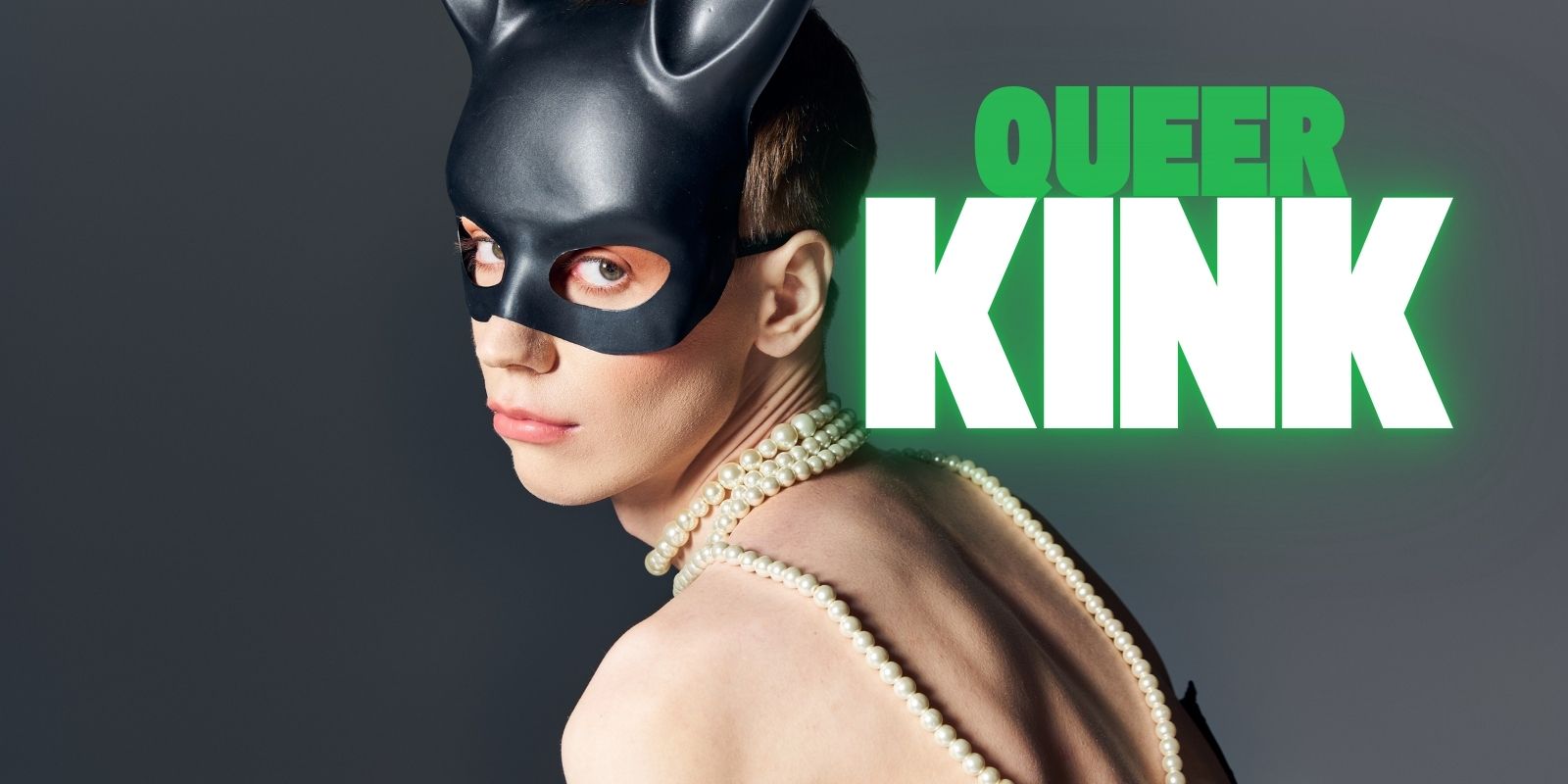Queer Kink: Identity, Community, and Resistance
Queer Kink is not just about erotic play—it is a way of living, expressing, and resisting. It challenges rigid ideas of sex and gender while creating space for people to explore desire without shame. For queer players, kink becomes more than fantasy. It is a practice that builds identity, celebrates difference, and resists the structures that try to silence pleasure.
Underneath the rope, toys, and rituals, queer kink thrives because it combines intimacy with liberation. It allows partners to design rules that reflect who they are, not what society expects. This guide explores what queer kink means, how it ties to pride, and why respect and etiquette keep it safe, creative, and powerful.
Table of Contents
- What Is Queer Kink?
- Kink as Resistance and Pride
- Community and Connection
- Queer Kink and Polyamory
- Etiquette and Respect in Queer Spaces
- Key Takeaways
- FAQ: Queer Kink Basics
What Is Queer Kink?
Queer Kink is the meeting of kink practices with queer identity. It is rooted in consent, creativity, and a refusal to conform to rigid roles. Players may choose names, pronouns, and power dynamics that reflect who they are rather than what others expect. This freedom makes queer kink both erotic and deeply affirming.
Unlike mainstream portrayals of BDSM, queer fetish is not limited to one dynamic or body type. It values flexibility, negotiation, and the right to play without judgment. Toys, rituals, and protocols are often adapted to fit the needs of those involved. What matters most is the respect that binds the scene together, not whether it looks like someone else’s version of kink.
Queer writers and educators stress that kink is part of pride, not separate from it. As Rachel Harlich explains, queer kink honors both survival and joy. It is a way of claiming space for bodies, desires, and power that mainstream culture tries to erase. For many, queer kink is not just about play—it is about belonging.
Kink as Resistance and Pride
Queer Kink has always been tied to acts of resistance. For many, scenes are not only erotic but also political. To embrace queer desire openly is to push back against a world that often demands silence. Kink turns that resistance into ritual, where players claim their bodies, their pleasure, and their right to be visible. The act of tying a rope, using honorifics, or kneeling in service becomes an affirmation that queer lives and desires will not be hidden.
History shows this connection clearly. Queer communities have long used fetish spaces as sanctuaries where gender, sexuality, and power could be expressed without shame. These practices resist social norms that deny queer pleasure or paint it as deviant. Writing like SlashQueer’s essay on kink and resistance highlights how these acts of play are also acts of defiance. They show the world that queerness and kink are not marginal, but vital sources of strength and identity.
Pride celebrations also carry this spirit. For some, walking in leather, latex, or rope during Pride is not just performance—it is heritage. These expressions tie kink to the ongoing struggle for rights, safety, and recognition. In this sense, queer fetish is not simply private play but a public statement: pleasure and resistance belong together.
Community and Connection
Queer Kink thrives when people build spaces where acceptance is the rule, not the exception. Many players discover that scenes are not just about toys or techniques but about the bonds that form in trusted circles. Sharing skills, learning etiquette, and supporting one another makes queer kink safer and more meaningful. These connections provide strength against isolation and judgment, while also creating a network of care.
Communities grow in many forms. Some meet at social events or munches, while others connect online before exploring play in person. Building local groups helps establish accountability and mutual respect. Resources like Creating Your Own Kink Community show how collective effort can make space for new players and support long-term relationships. For queer players, this sense of belonging often matters as much as the erotic play itself.
At its heart, queer fetish community is about chosen family. People come together to share not only scenes but also struggles, triumphs, and everyday life. When trust deepens, play becomes richer because everyone knows they are valued beyond their role in a single scene. This combination of intimacy and solidarity makes community one of the most powerful parts of queer fetish.
Queer Kink and Polyamory
Queer Kink often overlaps with polyamory because both value choice, honesty, and freedom to build relationships outside traditional models. In many circles, kink and polyamory work together to support authentic connections. People create structures that reflect their needs rather than conforming to outside expectations. This allows partners to explore roles, dynamics, and intimacy without hiding parts of themselves.
Exploring polyamory in kink requires strong communication. Clear agreements about boundaries, time, and aftercare prevent misunderstandings and keep each relationship respected. The guide on polyamory explains how different forms of love and commitment can exist at once. When blended with queer fetish, these approaches create diverse relationship networks where pleasure and loyalty are defined by choice rather than tradition.
Etiquette and Respect in Queer Spaces
Queer Kink relies on etiquette as much as it does on play. Respecting limits, pronouns, and roles is the foundation that allows trust to grow. In inclusive spaces, etiquette is not about rigid formality but about making sure everyone feels seen and safe. Following guides like BDSM Etiquette helps keep scenes grounded in care, especially when people come from diverse identities and backgrounds.
As a Domme, I expect obedience, but I also demand respect for community rules. In my experience, etiquette ensures that scenes run smoothly and that submissives know exactly what is expected of them. When players ignore etiquette, they are not just being careless—they risk the safety and dignity of those around them. In queer fetish spaces, etiquette is the difference between a scene that empowers and one that alienates.
Etiquette also extends beyond scenes. How people speak at events, the way they approach new partners, and the tone they use when negotiating all shape the culture of queer kink. Respect is not a single action but a steady practice that keeps play safe and community strong. Without it, queer spaces lose the trust that makes them thrive.

Key Takeaways
- Queer fetish connects erotic play with identity, pride, and community care.
- Scenes are built on respect, negotiation, and the freedom to adapt roles.
- Kink becomes resistance by affirming queer bodies and desires without shame.
- Community provides chosen family, trust, and safety beyond individual play.
- Etiquette ensures that queer kink spaces remain inclusive, safe, and empowering.
FAQ: Queer Kink Basics
What makes kink queer?
Queer Kink adapts play to reflect diverse identities, bodies, and power dynamics. It resists rigid roles and focuses on respect and choice.
Is queer kink different from mainstream BDSM?
Yes. While both value consent, queer kink often centers inclusivity, identity, and resistance to social norms that marginalize desire.
Can queer kink include polyamory?
Yes. Many queer kink circles also practice polyamory, combining open structures with negotiated trust and care.
Why is etiquette so important in queer kink spaces?
Etiquette protects safety and ensures respect for diverse roles and pronouns. It creates trust and stability within the community.
Is queer kink political as well as erotic?
Yes. Expressing queer kink openly is both an act of resistance and a celebration of identity, linking pride with pleasure.

Keyholder Katie is a strict, confident dominatrix who takes pride in control, chastity play, and keeping her submissives loyal, obedient, and locked.



